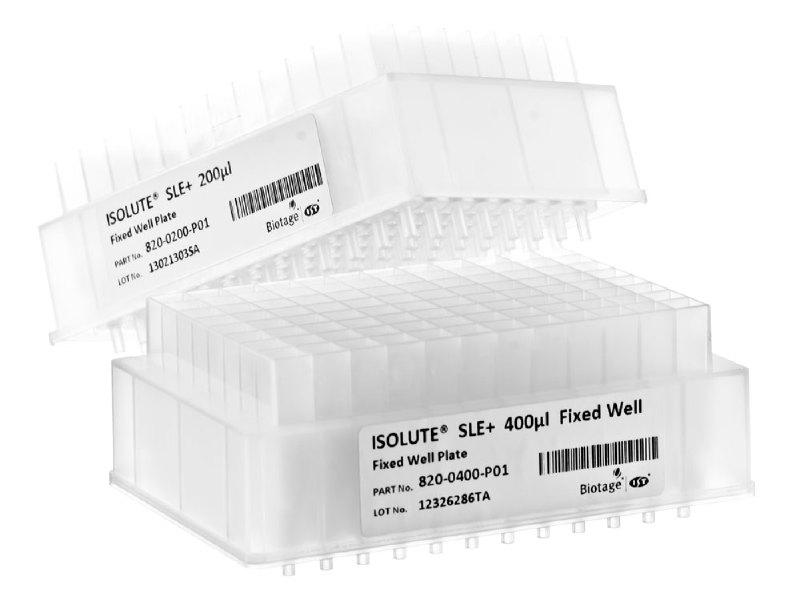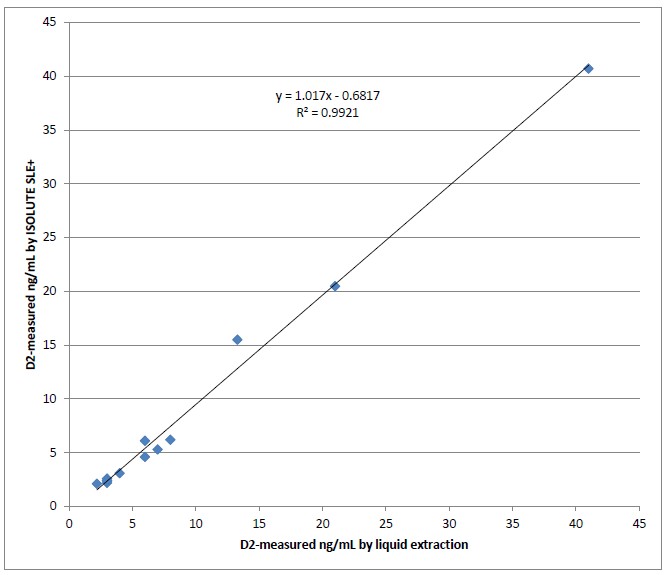Converting a liquid-liquid extraction method for vitamin D to a Supported Liquid Extraction plate format

Leveraging reduced workflow solutions in high throughput clinical laboratories
Introduction
The objective of this study was to determine feasibility of transferring a validated Liquid-Liquid Extraction (LLE) method to a Supported Liquid Extraction (SLE) method using Biotage ISOLUTE SLE+ 96-well plates (400μL sample capacity). The laboratory supporting this study processes ~550 samples per month supporting vitamin D analysis in plasma and serum (mixed samples / not separated). During this evaluation, it was determined that sample processing time was reduced by ~50% for a de-identified patient set (n=30, split and processed by both methods). Towards high throughput analysis platforms, ISOLUTE SLE+ was demonstrated as a viable solution in the sample preparation workflow for vitamin D applications.
Experimental overview
The strategy for this development workflow began with the LLE procedure and the direct transfer to SLE was evaluated. To optimize the method for analyte recovery, pH adjustment was evaluated in the sample pre-treatment. Elution volumes were also optimized for analyte recovery. Once optimized, the proof-of-concept was determined on a real patient sample set. The samples were split and process by each method for verification.
Conclusions
Transfer of methodology from a traditional LLE method to a SLE method was simple and straightforward, with minimal optimization required. Good correlation between measured levels of vitamin D metabolites in split samples extracted using the original validated LLE method and the optimized SLE method using ISOLUTE SLE+ plates was achieved.
Correlation plot: split patient sample study, determination of vitamin D3 in plasma and serum
Correlation plot: split patient sample study, determination of vitamin D2 in plasma and serum
Time for processing a batch of 30 patient samples (serum and plasma) was approximately halved using the SLE approach, from > 4 hours to < 2 hours. Due to the cleaner nature of the extraction, centrifugation steps were not required in the SLE method.
This study suggests that SLE using ISOLUTE SLE+ 96-well extraction plates is a viable alternative to LLE in a busy clinical laboratory.
